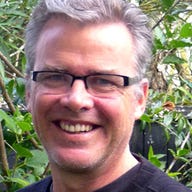Death and injury toll prompts SAS analytics investment

In November 2010, a methane gas explosion ripped through the Pike River coal mine on the South Island of New Zealand's rugged West Coast.
Twenty nine miners died as a result of what was found by a Royal Commission of Enquiry to have been an avoidable tragedy.
That disaster and the realisation that other New Zealand industries, such as forestry, were lagging international safety benchmarks, led to widespread changes in regulation, policy, and attitude among responsible businesses, regulators, and government.
Together, they are targeting a 25 percent reduction in serious workplace harm and deaths by 2020.
One of the key agencies charged with achieving that aggressive target is WorkSafe NZ, and it is looking to a new analytics software system to help it reach its goal.
WorkSafe has implemented SAS Visual Analytics to help it become an "intelligence led" rather than an "intelligence fed" organisation, said John Munro, manager of operational intelligence.
WorkSafe says the SAS system, dubbed the System for Work Related Injury Forecasting and Targeting (SWIFT), will help it meet that goal by enabling timely, "clear visualisations of workplace safety trends".
A six-week rollout by consultancy firm Navigatus will see SWIFT go into production within a week, Munro said.
The project has also helped boost cooperation between key health and safety agencies, including New Zealand's Accident Compensation Corporation (ACC), which delivers much of the incident data needed for tracking, and Statistics NZ.
The aim is to generate timely, accurate data that will give WorkSafe a greater understanding of the health and safety environment.
"Much more timely data will help inspectors in the field to be in the right place at the right time," Munro said.
Munro said the SWIFT project was led by IT, which was also undertaking a significant refresh of WorkSafe's management systems. Swift has to be able to link into those.
"We don't want it to be information rich and knowledge poor," he said.
Munro said that while SWIFT was not a "golden bullet, it was part of the work it was doing to make New Zealand a leader in health and safety regulation.
WorkSafe had talked a lot about Pike River, he said, and hopes that out of that significant adversity, some good will follow.
"We want people to go to work and come home safely," he said.